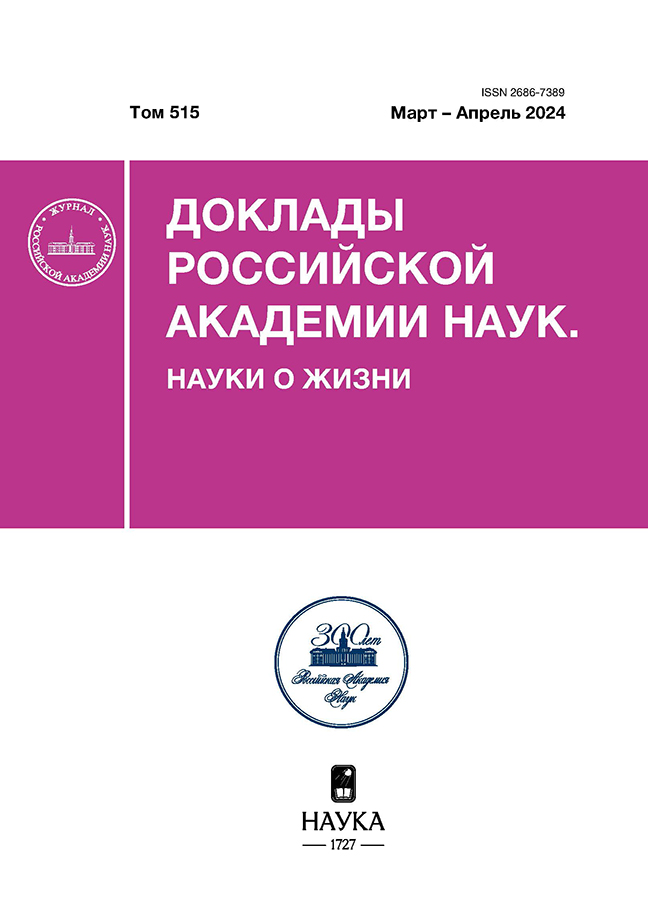New data on the ecology of the fossil don hare (Lepus tanaiticus [Gureev, 1964])
- 作者: Pavlova M.R.1, Boeskorov G.G.2, Cheprasov M.Y.3,4, Novgorodov G.P.3
-
隶属关系:
- Melnikov’s Permafrost Institute, Siberian Branch of RAS
- Diamond and Precious Metals Geology Institute, Siberian Branch of RAS
- M. K. Ammosov’s North-Eastern Federal University
- Yakutsk Scientific Center, Siberian Branch of RAS
- 期: 卷 515, 编号 1 (2024)
- 页面: 122-127
- 栏目: Articles
- URL: https://ruspoj.com/2686-7389/article/view/651452
- DOI: https://doi.org/10.31857/S2686738924020205
- EDN: https://elibrary.ru/WDXRHZ
- ID: 651452
如何引用文章
详细
A spore-pollen research of the contents of the gastrointestinal tracts and sediments containing frozen mummies of the fossil Don hare, discovered in the sediments of the Upper Pleistocene ice complex in the Verkhoyansk region of Yakutia, was carried out for the first time. Radiocarbon dating (C14) revealed that the found hares lived during the Karginian Interstadial of the Late Pleistocene, 32.5 thousand years ago (calibrated date). As a result, the understanding of the extinct Lepus tanaiticus ecology has been expanded: this species lived in cold steppes dominated by xerophytic communities, as well as in grass-forb and sedge-forb meadows; unlike the modern mountain hare L. timidus, which feeds during winter time mainly on branches and bark of woody plants and shrubs, the diet of Don hares in winter previously consisted of herbaceous plants.
全文:
作者简介
M. Pavlova
Melnikov’s Permafrost Institute, Siberian Branch of RAS
编辑信件的主要联系方式.
Email: nigaer@yandex.ru
俄罗斯联邦, Yakutsk
G. Boeskorov
Diamond and Precious Metals Geology Institute, Siberian Branch of RAS
Email: nigaer@yandex.ru
俄罗斯联邦, Yakutsk
M. Cheprasov
M. K. Ammosov’s North-Eastern Federal University; Yakutsk Scientific Center, Siberian Branch of RAS
Email: nigaer@yandex.ru
俄罗斯联邦, Yakutsk; Yakutsk
G. Novgorodov
M. K. Ammosov’s North-Eastern Federal University
Email: nigaer@yandex.ru
俄罗斯联邦, Yakutsk
参考
- Боескоров Г.Г., Чернова О.Ф., Щелчкова М.В. Первая находка замороженной мумии ископаемого донского зайца Lepus tanaiticus (Leporidae, Lagomorpha) из плейстоцена Якутии // Докл. РАН. Науки о Земле. 2023. Т. 510. № 1. С. 71–76.
- Sharko F., Slobodova N., Boulygina E., et al. Ancient DNA of the Don-hares assumes the existence of two distinct mitochondrial clades in NorthEast Asia // Genes. 2023. V. 14. № 3. 700. P. 1–11.
- Пыльцевой анализ / под ред. И. М. Покровской. М.: Госгеолиздат, 1950. 570 с.
- Faegri K., Iversen J. Textbook of Pollen Analysis. Chichester: John Wiley & Sons, 1989. 328 p.
- Prager A., Theuerkauf M., Couwenberg J., et al. Pollen and non-pollen palynomorphs as tools for identifying alder carr deposits: A surface sample study from NE-Germany // Rev. Palaeobot. Palynol. 2012. V. 186. P. 38–57.
- Barthelmes A., de Klerk P., Prager A., et al. Expanding NPP analysis to eutrophic and forested sites: Significance of NPPs in a Holocene wood peat section (NE Germany) // Rev. Palaeobot. Palynol., 2012. V. 186. P. 22–37. https://doi.org/10.1016/j.revpalbo.2012.07.007
- Позднечетвертичные растительность и климаты Сибири и Российского Дальнего Востока (палинологическая и радиоуглеродная база) / под ред. П.М. Андерсон, А.В. Ложкина. Магадан: изд-во СВНЦ ДВО РАН, 2002. 369 с.
- Гитерман Р.Е. История растительности северо-востока СССР в плиоцене и плейстоцене. М.: Наука, 1985. 95 с.
- Гуреев А.А. Зайцеобразные (Lagomorpha) // Фауна СССР. Млекопитающие. Т. 3. 1964. Вып. 10. C. 187–188.
- Аверьянов А.О. Позднеплейстоценовый заяц Lepus tanaiticus (Lagomopha, Leporidae) Сибири // Исследования по плейстоценовым и современным млекопитающим. СПб.: ЗИН РАН, 1995. С. 121–162 (Тр. ЗИН РАН. Т. 263).
- Оводов Н.Д. Позднеплейстоценовые зайцы Сибири. К вопросу о филетической эволюции внутри рода Lepus // Проблемы археологии, этнографии, антропологии Сибири и сопредельных территорий (Мат-лы годовой сессии ИАиЭ СО РАН). Новосибирск: Изд-во ИАиЭ СО РАН, 2006. Т. XII. Ч. I. С. 212–217.
- Соколов В.Е., Иваницкая Е.Ю., Груздев В.В., Гептнер В.Г. Млекопитающие России и сопредельных регионов. Зайцеобразные. М.: Наука, 1994. 272 с.
- Тавровский В.А., Егоров О.В., Кривошеев В.Г. и др. Млекопитающие Якутии. М.: Наука, 1971. 660 с.
- Наумов С.П. Экология зайца-беляка. М.: МЛИП, 1947. 207 с.
- Слудский А.А., Бернштейн А.Д., Шубин И.Г., Страутман И.Г. Млекопитающие Казахстана. Т. 2. Зайцеобразные. Алма-Ата: Наука, 1980. 236 с.
补充文件












